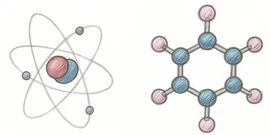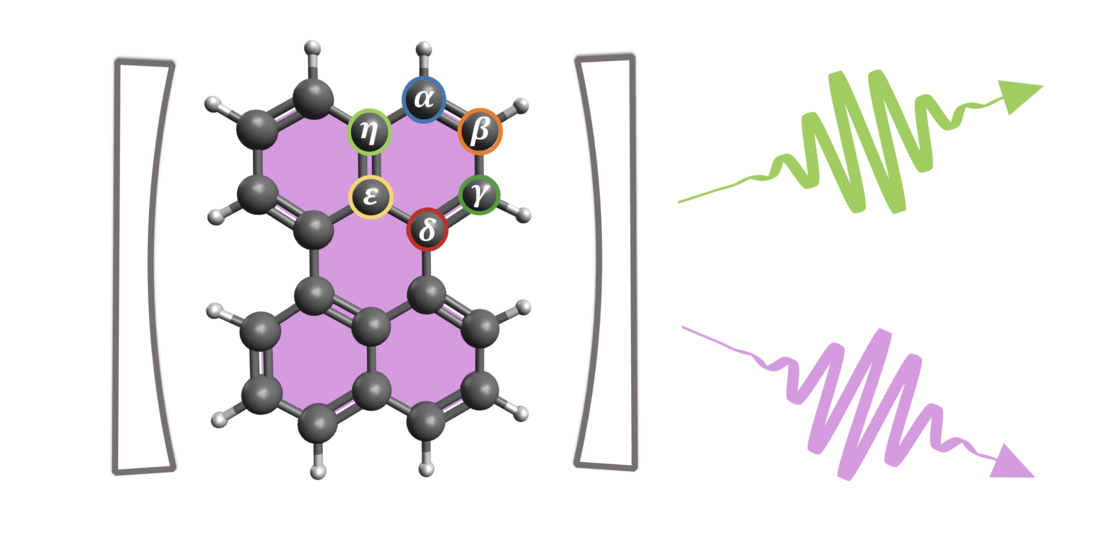Research

The ability to isolate, detect, and control individual quantum systems has become a cornerstone of modern physics. An excellent example in this direction is the tremendous advances in atomic physics achieved in the past 50 years. These have enabled tests of quantum theory at levels previously unattainable and provided the basis for various emerging quantum technologies. For instance, state-of-the-art optical clocks based on neutral atoms and atomic ions now achieve fractional frequency uncertainties at the level of 10-19; quantum simulators with 102--103 controllable atoms in tweezer arrays are capable of emulating strongly correlated quantum matter. Likewise, high-fidelity gate operations in trapped ion routinely reach single-qubit error rates below 10-3, closing up the gap towards fault-tolerant quantum computation.
In contrast, experimenting with molecules present substantially greater challenges. Even the most structurally simple molecules encompass a range of mutually interacting degrees of freedoms -- including electronic, vibrational, rotational, and spins. These modes have different energy scales and have been traditionally addressed in distinct contexts and using vastly different techniques. For example, electronic transitions are probed via optical excitation, vibrational dynamics using infrared to terahertz techniques, rotational states by microwave spectroscopy, and spin degrees of freedom most well-knownly through nuclear magnetic resonance.
This richness in internal degrees of freedom also makes molecules attractive: the coupling between electronic and nuclear degrees of freedom permits enhanced sensitivity to fundamental symmetry violations; these internal degrees of freedom, if can be individually controlled, can also be harnessed for applications in quantum communication, computation, metrology, and sensing; further, state-controlled interactions among molecules could help us unveil the pathways of chemical reactions.
-- We find molecules challenging and fun. In our group, we experiment with molecules through two approaches.
Controlling single molecules in a solid -- towards a molecule-based quantum network node
A more or less suprising passway towards isolating and detecting single molecules is by embedding them in a solid. Embedding a molecule in a high-bandgap crystal leads to signifcant reduction of the system's complexity: first, the rotational motion is frozen due to fixed orientation in the crystal; second, the vibration state thermalizes rapidly with the solid state environment, leads to a almost constant occupation of the vibrational ground state, when the crystal is cooled to low temperatures; third, the electronic transition has slightly different frequencies from molecule to molecule, due to small differences in their nanoscopic environment -- this allows to spectrally isolate them. Over the past three decades, single-molecule spectroscopy and quantum optics have advanced to the point where narrow zero-phonon-line transitions with near-Fourier-limited linewidths are achievable in carefully chosen molecular-host systems. These advances have established molecules as viable single-photon emitters that can be integrated with nanophotonic structures such as optical microresonators.
Building on this foundation, our work extends the single-molecule quantum optics by incorporating microwave and laser control to manipulate the electronic and nuclear spin degrees of freedom. This approach opens the possibility of combining long-lived spin states with optically accessible transitions. One of our central goals is to achieve deterministic control over the spin state of an individual molecule and to coherently couple it to photonic modes. Realizing such a molecular spin-photon interface would establish molecules as hybrid quantum nodes that combine the advantages of spin-based quantum memories with efficient optical readout. Success in this direction would position molecules as functional elements in future quantum networks.
Such quantum networks have the potential to transform various fields in science and technology by leveraging the principles of quantum mechanics to enable secure communication, quantum cloud computing, and distributed quantum sensing. As an elementary building block, a network node needs to fulfill the requirements of storing, processing quantum information in stationary qubits, and efficiently interconverting the information to flying photons. We see that molecules hold unique properties in realizing these tasks, owing to the flexibility in tailoring the both the electronic and spin degrees of freedoms through chemical modifications. Along this direction, our experiment combines the recent advances in single-molecule microscopy, precision spectroscopy, spin control, and cavity quantum electrodynamics to unveil this potential.

Taming cold molecules in the gas phase -- chirality, coherence, and molecular qubits
On a distinct front, we work to prepare cold, isolated molecules in the gas phase. Isolated molecules in an ultra-high vacuum environment are nearly free of environmental perturbations, rendering them an excellent test platform for quantum physics. One focus of our gas-phase experiment is molecular chirality -- an intriguring and fundamental property that has far-reaching impact on various fields. The measurement and control of molecular chirality with light is thus an emerging interdisciplinary field of research. Our aim is to perform sensitive measurements on chiral molecules through the action of optical forces (forces exerted on a molecule through interaction with light). Such optical forces can be generated by tailored chiral light fields. We want to detect these forces and employ them to investigate fundamental questions of quantum mechanics related to the chirality of molecules. For example, we have theoretically shown that it is possible to generate superpositions of enantiomers through the action of optical forces, an such superposition states could be used for quantum sensing of interactions with a chiral environment. In addition to working with chiral molecules, we are initiating efforts to combine laser cooling techniques with cold-molecule beams, with the longer-term objective of controlling individual molecules in the gas phase for quantum information tasks.

Compared to embedding molecules in the solid state, this route has its distinct set of challenges. The rotational and vibrational levels of molecules have longer lifetimes compared to the pure electronic states, which makes laser-based detection, cooling and manipulation schemes very demanding. We use cryogenic buffer gas sources to prepare beams of molecules close to their ro-vibrational ground state. The beams also have a lower forward velocity compared to traditional supersonic beams. Together, these provide a well-defined starting point for controlled investigations of phenomena such as chiral interactions, while also serving as a platform for developing laser-cooling schemes that could eventually bring molecules into the ultracold regime required for quantum simulation and computation.

